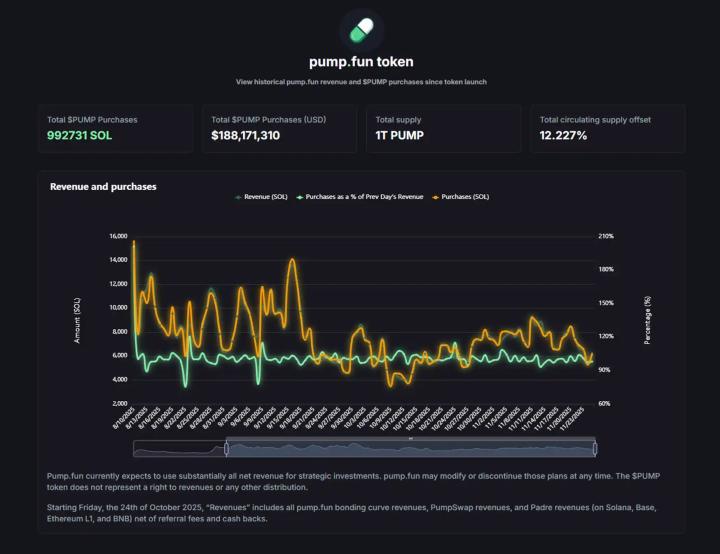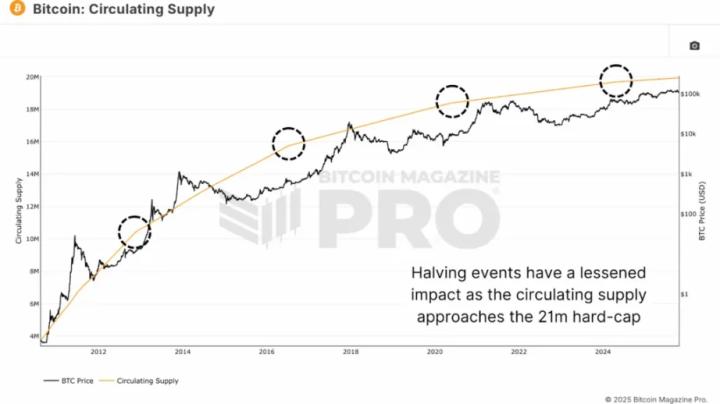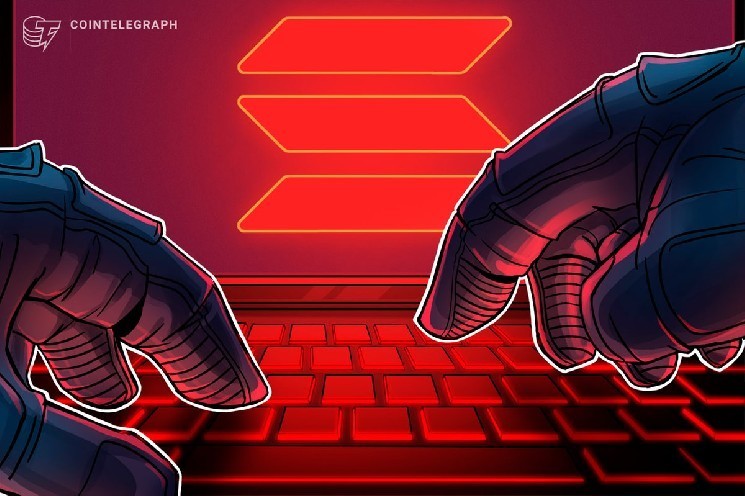Author: Patrick Scott | Dynamo DeFi
Compiled by: TechFlow TechFlow
The liquidation day for the crypto industry has finally arrived.
Over the past five years, tokens have enjoyed a state of "speculative demand far exceeding fundamentals," which I would politely call. To put it less politely, they have been severely overvalued .
The reason is actually quite simple: there aren't many liquid assets with strong fundamentals in the crypto industry. Therefore, investors can only gain exposure through the assets they have access to, which are typically Bitcoin or altcoins . Add to this the retail investors who have heard the "Bitcoin millionaire" story and hope to replicate that return by investing in newer, smaller tokens.
This has led to a demand for Altcoin far exceeding the supply of those Altcoin with solid fundamentals.
First-level effect
When market sentiment hits rock bottom, you can buy any asset at will and reap amazing returns a few years later.
Second-layer effect
The business models of most industries (if you can call them business models) revolve around selling their own tokens , rather than relying on actual revenue streams tied to their products.
Over the past two years, the Altcoin market has experienced three disastrous events:
The rise of "Pump Fun" and other token issuance platforms
These platforms have "commoditized" (i.e., made) the issuance of new tokens too widespread, causing attention to be scattered across millions of assets. This dispersion effect prevents the top few thousand tokens from continuing to attract concentrated inflows of funds and disrupts the wealth effect that Bitcoin halvings typically bring.
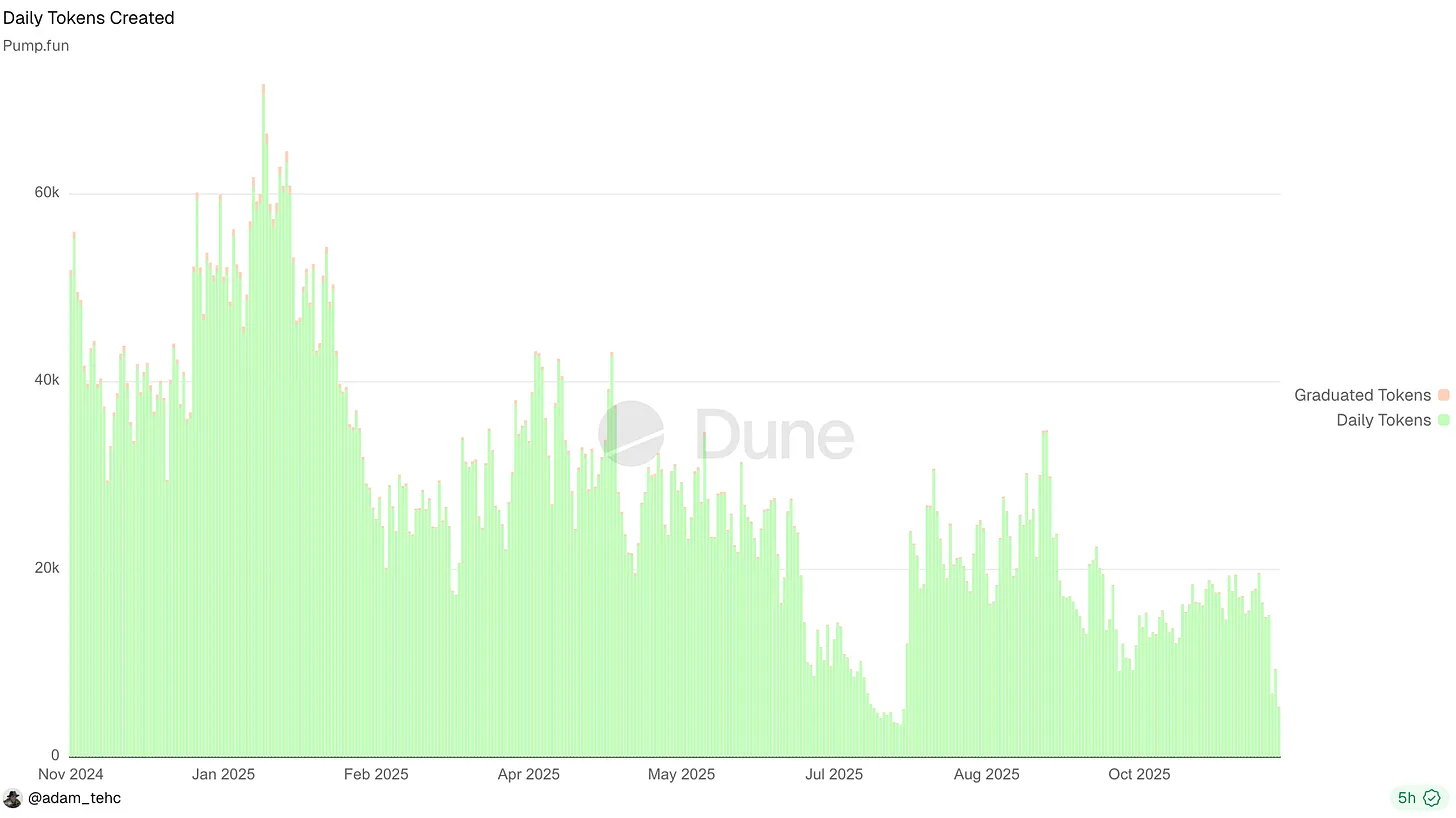
For many days earlier this year, the Pump platform saw more than 50,000 tokens listed daily.
Some crypto assets are beginning to have real fundamentals.
Some tokens (like HYPE) and new IPO projects (like CRCL) are starting to show real fundamentals. Once assets with fundamental support appear in the market, it becomes difficult to bet on tokens that are only supported by white papers.
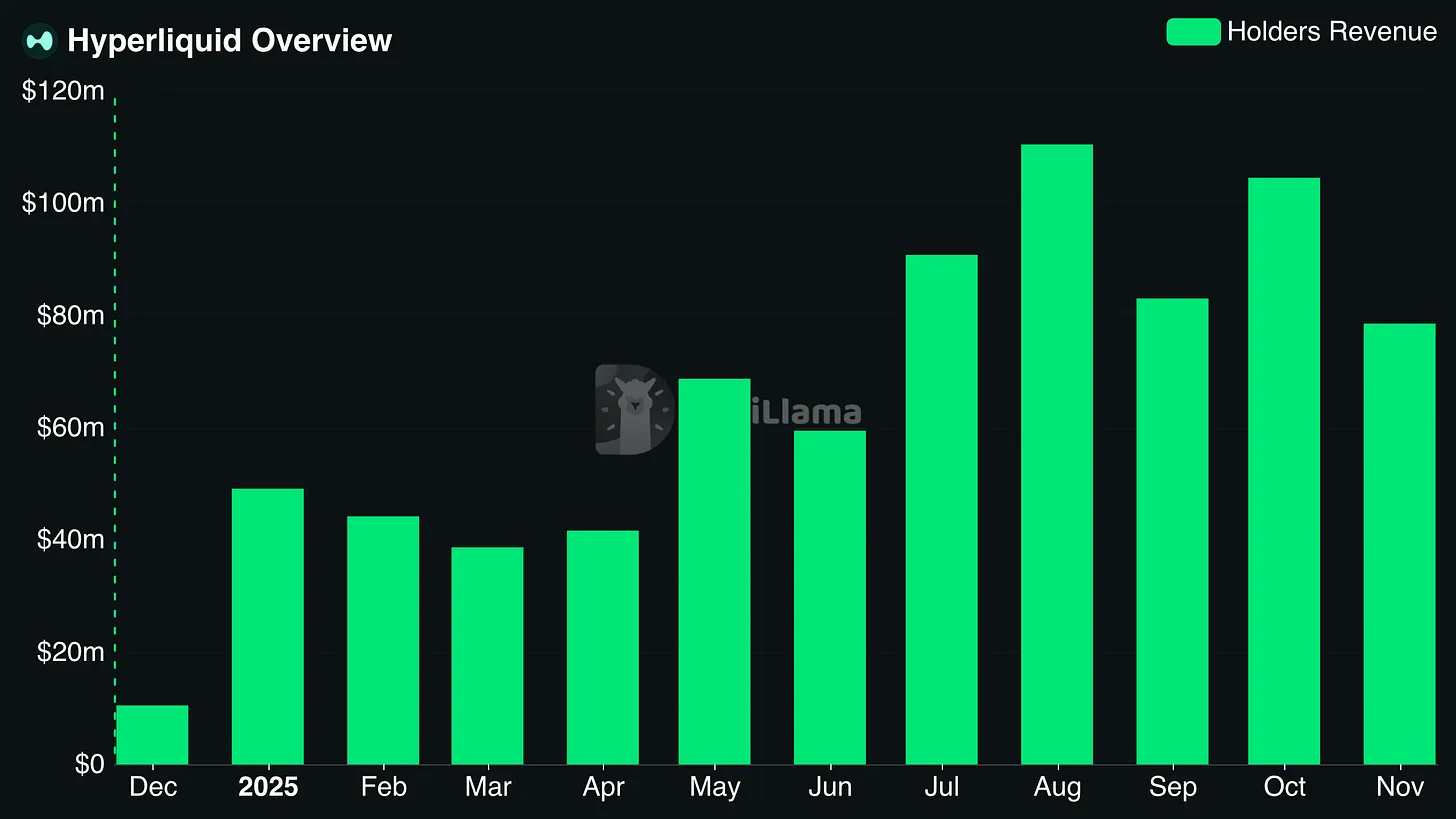
Hyperliquid holders often have monthly incomes exceeding $100 million.
Meanwhile, tech stocks have outperformed the crypto market. In many cases, stocks related to artificial intelligence, robotics, biotechnology, and quantum computing have outperformed the crypto market. This has left retail investors wondering: why risk investing in Altcoin when "real" companies offer higher returns and seem to be less risky? Even the NASDAQ has outperformed Bitcoin and Altcoin this year.
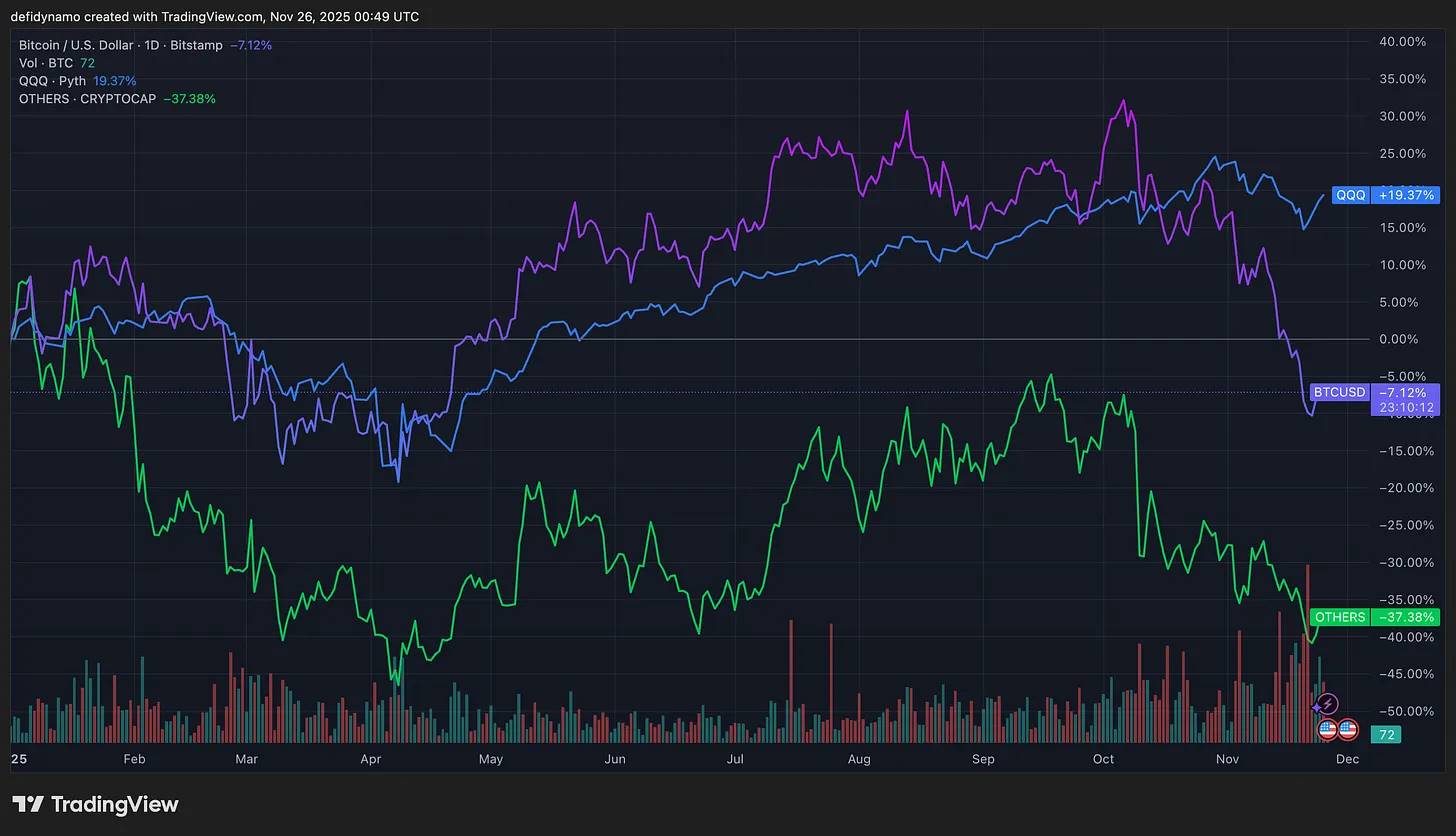
What was the result?
Poorly performing Altcoin have become a "graveyard";
Teams are fiercely competing for an increasingly scarce pool of capital;
Even experienced crypto investors are feeling lost, frantically searching for investment opportunities like headless flies.
Ultimately, tokens either represent an interest in a business or are worthless. They are not some magical new thing that derives value simply from their existence.
If you stop viewing tokens as something incomprehensible and instead see them as assets representing a company's future cash flow, everything becomes much clearer.
But you might protest, saying, "Dynamo, some tokens don't entitle you to future cash flows! Some tokens are utility tokens! Some protocols have both tokens and equity!" But you're wrong. These tokens still represent future cash flows; it's just that the cash flow they're associated with happens to be $0 .
Ultimately, tokens either provide benefits in the business or have no value whatsoever. They do not automatically acquire value simply because they "exist" or have a "community" (as many people believe).
It's important to note that this viewpoint does not apply to cryptocurrencies like Bitcoin (BTC), as they are closer to the characteristics of commodities; the discussion here concerns protocol tokens.
In the near future, the only DeFi tokens with real value will be those that exist as pseudo-equity and meet the following two conditions:
The right to claim income from the agreement;
The revenue generated by the agreement is sufficient to make it an attractive value proposition.
Retail investors are parting ways with the crypto market.
Retail investors have temporarily left the crypto market.
Some top KOLs are proclaiming that "crime is legal," yet they are surprised by people's reluctance to become victims of "crime."
Currently, retail investors have lost interest in the vast majority of tokens.
Besides the reasons mentioned earlier, another important factor is that people are tired of losing money .
Overblown promises : The value of many tokens is built on promises that cannot be fulfilled.
Token oversupply : Due to the rise of memecoin issuance platforms, there is a severe oversupply of tokens in the market.
Predatory token economics : The industry's tolerance of worthless tokens leads retail investors to correctly believe that they are destined to "take the fall".
The result? Those who would have bought crypto assets turned to other outlets to satisfy their "gambling urges," such as sports betting, prediction markets, and stock options. These choices may not be wise, but buying most Altcoin is hardly a good idea either.
But can we blame these people?
Some KOLs, while discussing the idea that "crime is legal," are surprised by people's reluctance to become victims.
This public apathy towards the crypto market is also reflected in interest in the industry. This year's enthusiasm is far from reaching the levels of 2021, despite better fundamentals and lower regulatory risks than before.
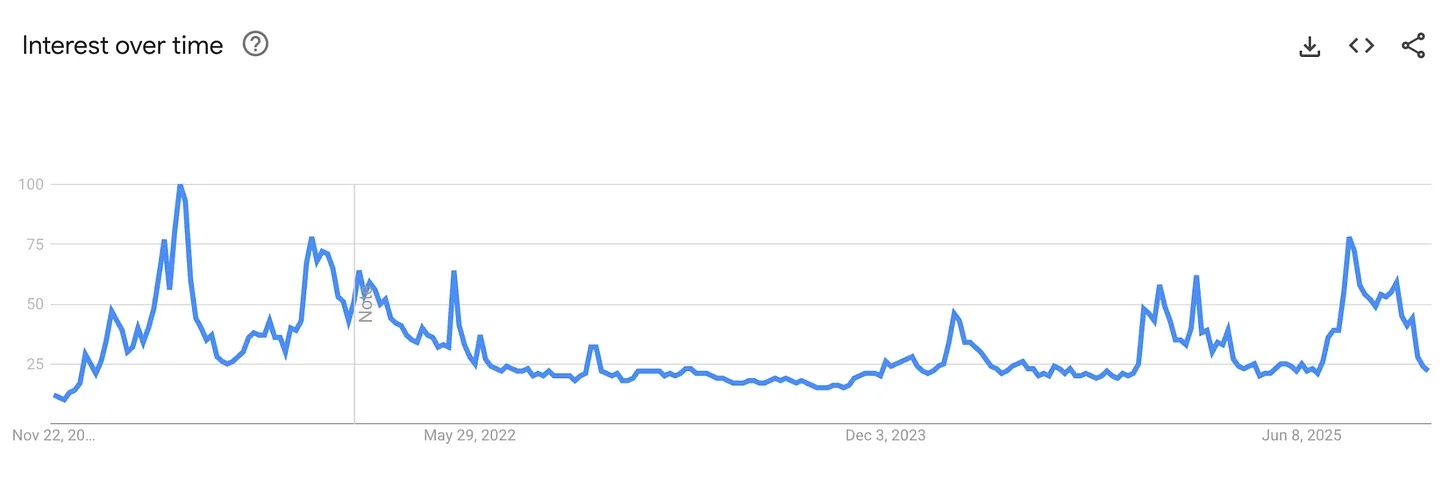
I also believe that ChatGPT and the ensuing AI boom dampened people's enthusiasm for cryptocurrencies because it showed a new generation what a true "killer app" looks like.
For the past decade, crypto enthusiasts have been talking about a new "Dot-Com Moment." However, this claim becomes less convincing as people witness artificial intelligence reshaping their world in more intuitive and obvious ways every day.
The gap in search engine popularity between crypto and AI is obvious. The last time cryptocurrency search interest surpassed AI on Google was during the FTX crash .
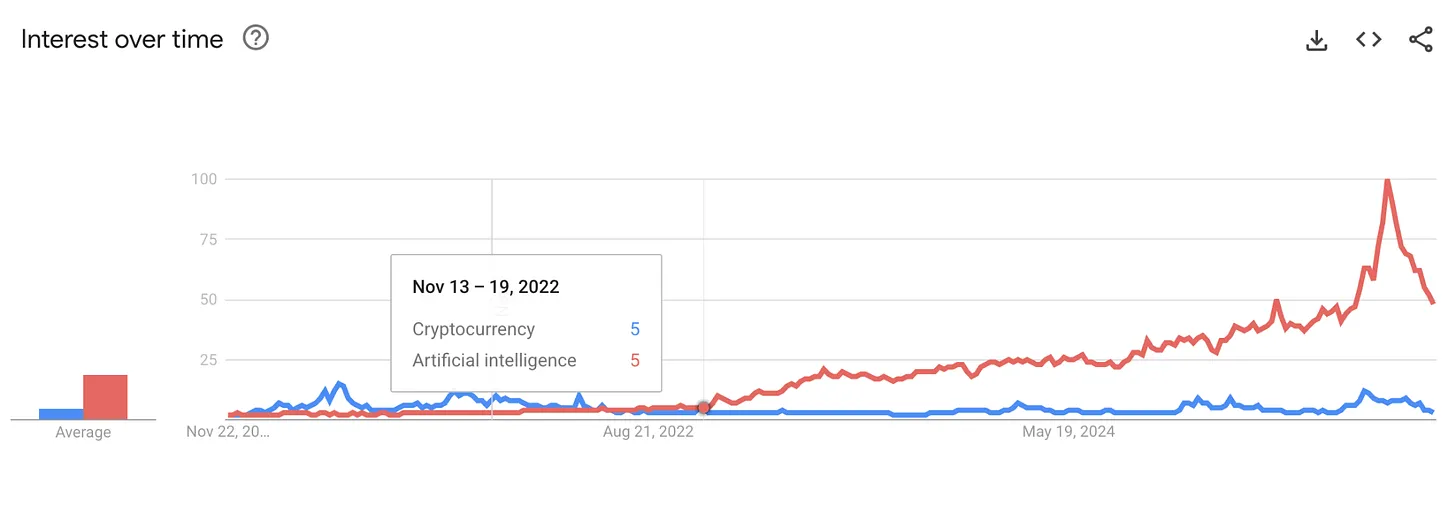
Will retail investors return to the crypto market?
The answer is: Yes.
It's fair to say that retail investors have reverted to a form of prediction market today, but they're buying binary options on "when the government shutdown will end," not Altcoin. For them to buy Altcoin on a large scale again, they need to feel they have a reasonable chance of profiting .
The core source of token value: protocol revenue
In a world where tokens cannot rely on a constant stream of speculative buyers, they must stand on their own intrinsic value.
After five years of experimentation, the painful truth has emerged: the only meaningful form of token value accumulation is the claim to protocol revenue (whether past, present, or future).
All these various forms of real value accumulation ultimately boil down to claims on contractual revenue or assets:
Dividends
Buybacks
Fee Burns
Treasury Control
This doesn't mean that an agreement must implement these measures today for it to have value. In the past, I've been criticized for expressing my hope that agreements I favored would reinvest revenue rather than use it for buybacks. But an agreement needs to have the ability to initiate these value-building mechanisms in the future, ideally through governance votes or the fulfillment of clear criteria . Vague promises are no longer sufficient.
Fortunately for savvy investors, this fundamental data is readily available on platforms like DefiLlama, covering thousands of protocols.

A quick look at the top protocols ranked by revenue over the past 30 days reveals a clear pattern: stablecoin issuers and derivatives platforms dominate, while launchpads , trading apps , CDPs (collateralized debt positions) , wallets , decentralized exchanges (DEXs), and lending protocols also show promise.
Several noteworthy conclusions:
Stablecoins and perpetual contracts are currently the two most profitable businesses in the crypto industry.
Trading-related businesses remain very profitable
Overall, the business that supports trading is highly profitable. However, if the market enters a prolonged bear market, revenue from trading-related activities could face significant risks unless the protocol can shift to trading real-world assets (RWAs) , as Hyperliquid has attempted.
Controlling distribution channels is just as important as building the underlying protocol.
I suspect that some hardcore DeFi users might strongly oppose trading apps or wallets becoming top revenue streams, since users can directly use protocols to save costs. However, in reality, applications like Axiom and Phantom are extremely profitable.
Some crypto applications generate tens of millions of dollars in revenue per month. If the protocols you're interested in haven't reached that level yet, that's okay. As the person in charge of DefiLlama's revenue, I know all too well that developing a product that the market is willing to pay for takes time. But the key is that there must be a path to profitability .
The era of playing around is over.
A Value-Driven Crypto World: An Investment Framework Analysis
When looking for investment tokens in the coming years, high-performing tokens should meet the following criteria:
The right to claim income under the agreement or a clear and transparent income claim process.
Stable and continuously growing income and profits
Market capitalization is within a reasonable multiple of past revenue.
Instead of just talking about theories, let's look at some concrete examples:
Curve Finance
Curve Finance has achieved steady and consistent revenue growth over the past three years, even as its fully diluted valuation (FDV) has declined. Ultimately, its FDV has fallen to less than eight times Curve's annualized revenue over the past month.
Because holders of locked Curve tokens receive bribes, and due to the long token release period, the actual yield is much higher. The next key question is whether Curve can maintain its revenue levels in the coming months.
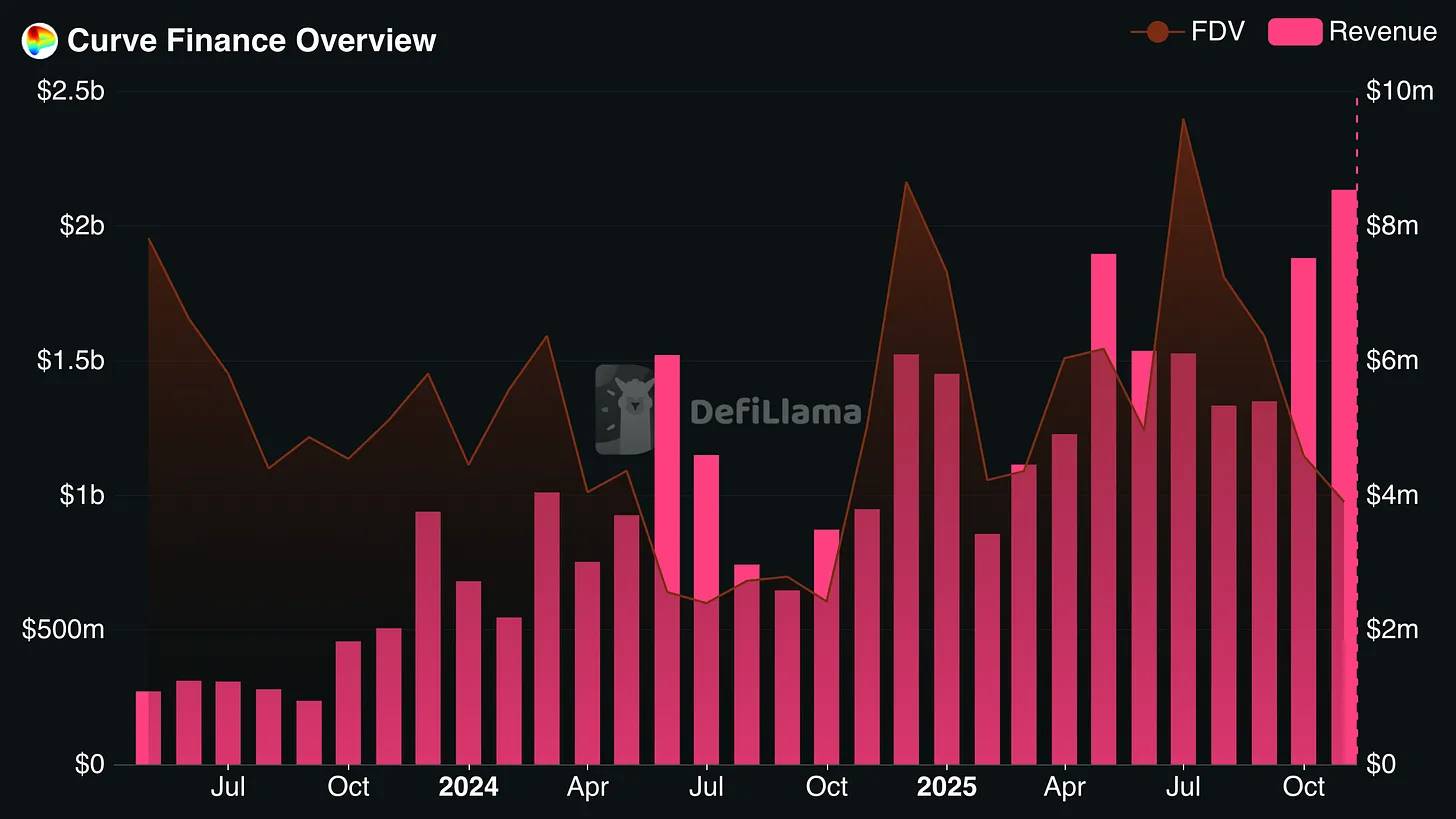
Jupiter
Jupiter has firmly established itself as one of the major beneficiaries of the Solana ecosystem's prosperity. It is the most widely used DEX aggregator and perpetual contract decentralized exchange (perp DEX) on the Solana chain.
In addition, Jupiter has made several strategic acquisitions, which have enabled it to leverage its distribution channels to expand into markets on other chains.
It is worth noting that Jupiter's annualized returns to token holders are quite substantial, amounting to approximately 25% of the circulating market capitalization and exceeding 10% of the FDV (Fully Diluted Valuation) .

Other protocols that conform to the standard: Hyperliquid, Sky, Aerodrome, and Pendle.
Positive Signal: A Beacon of Hope
The good news is that teams that truly care about their survival are quickly realizing this. I anticipate that in the coming years, the pressure of not being able to sell tokens indefinitely will prompt more DeFi projects to develop real-world revenue streams and peg their tokens to those streams.
If you know where to look, the future will be full of hope.




